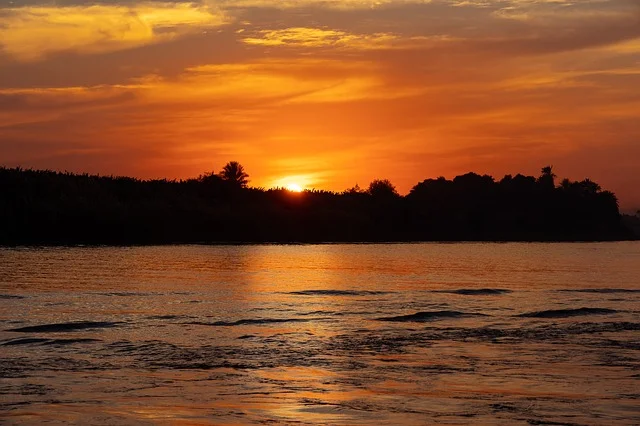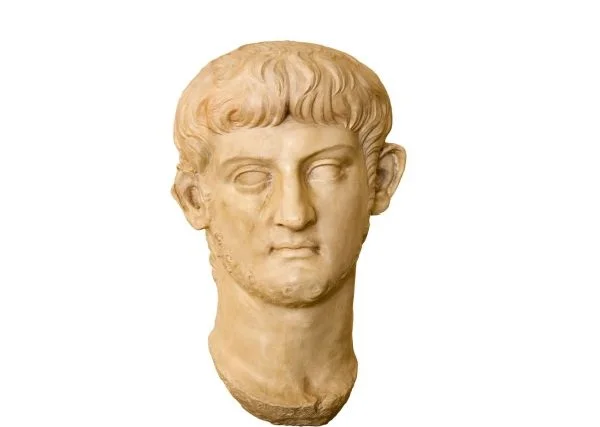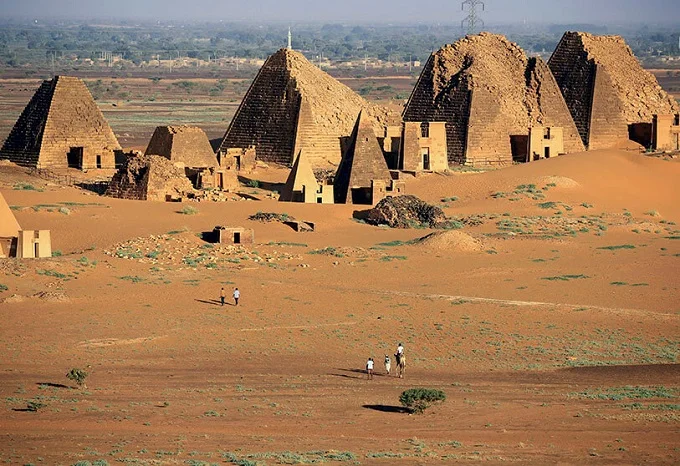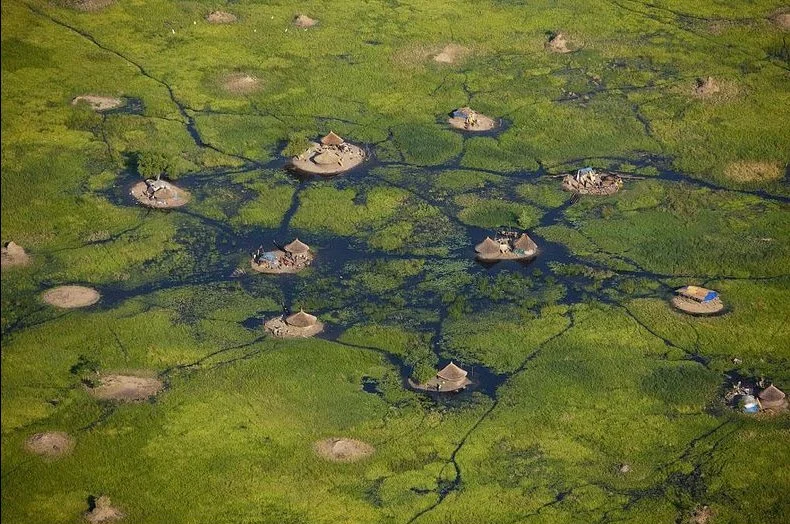How the ancient Romans searched for the source of the Nile and how their expedition ended

In the middle of the 19th century, European explorers and geographers were obsessed with one goal: to find the source of the Nile. But they weren’t the only ones. Long before Henry Morton Stanley reached the shores of Lake Victoria, ancient Rome was also trying to find the source of the mighty river. It is not surprising that the Nile held a special place in the minds of the ancients. From art and religion to economics and military triumphs, the mighty river was reflected in all aspects of Roman social and political life.

Under Emperor Nero, two expeditions tried to find the mythical source of the Nile. Although these Nero explorers never achieved their goal, they became the first Europeans to travel deep into equatorial Africa, leaving a detailed account of their journey.
Brief background
The Greek historian Herodotus called Egypt the gift of the Nile. Without a powerful river and regular floods, which left behind new layers of fertile black mud, there would have been no ancient Egyptian civilization. Therefore, it is not surprising that the Nile acquired mythical status, becoming a central element of Egyptian mythology. A symbol of rebirth, the river had its deity, devoted priests, and lavish ceremonies (including the famous Hymn to the Nile).
One of the Pharaoh’s main duties was to ensure that the annual flooding ran smoothly. When the Romans took over, Egyptian mythology was incorporated into the ever-growing Roman pantheon. More importantly, the “gift of the Nile” became the granary of the Roman Empire.
The Romans’ interest in this exotic land and its mighty river was a century ahead of the conquest. Already in the second century B.C., the Roman elite was imbued with the charm of the richest region in the Mediterranean. For a century and a half, influential figures in the Roman Republic were content to influence the policies of the Ptolemaic kings from afar.
The collapse of the First Triumvirate and the death of Pompey the Great in 48 B.C. marked a profound change. The arrival of Julius Caesar in Egypt marked the direct involvement of Rome in the affairs of the ancient region. This intervention culminated in the Roman annexation of Egypt in 30 B.C.
When Octavian (who soon became Augustus) celebrated the conquest of the wealthy province with a triumph in Rome, the personification of the Nile was one of the central elements of the procession. For the audience, this served as visual proof of the superiority of Rome and a representation of an expanding empire. The victory parade opened a window to a vast world under the control of Ancient Rome, and the statue of the Nile was accompanied by exotic animals, people, and a huge amount of prey.
The populace enjoyed these carefully orchestrated displays of power, gaining insight into the remote province, most of which would never have visited. The Roman elite responded to this new conquest by decorating their opulent mansions and palaces with motifs representing Egypt, leading to the emergence of the so-called Nilotic art. This particular art style became popular in the first century A.D. and brought exoticism to the home. The art of the Nilotic spoke of the Roman imperial power, which tamed the wild and alien land, and its mighty river that gives gifts.
By the time Emperor Nero came to power (A.D. 54-68), Egypt had been an integral part of the empire for almost a century. For most Romans, it was still an exotic country, and the Nile landscapes found in villas and tombs of the rich and powerful supported this image of a distant and mysterious province. But ancient Rome always wanted more, to go beyond Egypt and find the source of the Nile River.
In 25 B.C., the Greek geographer Strabo and the Roman ruler of Egypt, Aelius Gallus, followed in the footsteps of the Hellenistic explorers, climbing up the river to the First Rapid. In 33 A.D., the Romans went even further. At least that’s what the inscription found in Pselchis says, which mentions a soldier who made a map of the area.
However, the fort at Pselchis was just an isolated outpost with a symbolic garrison. The de facto southernmost border of the Roman Empire was the imposing fortress at Siena (modern-day Aswan). Here, customs duties were levied on all boats passing along the Nile, both south and north. It was here that Rome deployed a soldier of one of its legions (most likely from III Cyrenaica) with the task of guarding the border. This task was not always easy to accomplish, and more than once, this area was captured and plundered by the southern invaders.
One of these attacks occurred in 24 B.C. when the Kushite troops plundered the area, returning to Meroe the bronze head of Augustus, larger than in life. In response, the Roman legions invaded Kushite territory and reclaimed many of the plundered statues.
The conflict is recorded in the Res Gestae of Augustus, a monumental inscription on the life and achievements of the emperor, installed in all major cities of the empire after his death. The Romans, however, never made it to Meroe, where the statue’s large head was buried under the temple stairs until it was excavated in 1910. After the punitive expedition under Augustus, hostilities ceased, as Kush became a client state of Rome, and trade was established between the two powers. The Romans, however, did not travel further than Pselchis until the reign of Nero.
Search for the source of the Nile

When Nero ascended the throne, a period of peace reigned on the southern border of Roman Egypt. It looked like a great opportunity to organize an expedition into the unknown. Nero’s exact motives are unclear.
The expedition could be a preliminary survey for a full-blown Southern campaign. Or it could be due to scientific curiosity. In both cases, the expedition had to sail south, up the gifting river, to find the source of the Nile. And if there were two expeditions, the first was undertaken around 62 A.D., and the second took place five years later.
Pliny preserves important details of this account in his Natural History. It is known that Seneca was fascinated by the Nile, which he mentioned many times in his works. Seneca’s attraction to the great African river may have been inspired in part by his Stoic philosophy. In addition to the fact that the philosopher spent part of his youth in Egypt, he used this time to research this area. He played a prominent role in the court of Nero and, perhaps, even was the instigator of one of the expeditions.
Gifts of the Nile
The sources do not mention the initial part of the journey, which would lead the explorers of Nero across the Roman border and through the area in which the empire had some degree of influence. It would be reasonable to assume that the centurions took advantage of the river, which was the easiest and most efficient way to travel in the area. They had to cross the border at Siena, past Philae, before leaving the empire.

The Philae Islands were an important sanctuary in Egypt, but they were also a trading center, a place to exchange various goods from Roman Egypt and the far south. More importantly, it was also a center where information could be obtained and a guide who knew the area could be found. Having reached Pselchis with its small Roman garrison, the expedition would have to travel overland to Premnis, as this part of the Nile was difficult and dangerous to navigate.
At Premnis, the expedition members boarded boats that took them further south. This area was outside nominal Roman control, but after the August campaign, the Kingdom of Kush became a client state and an ally of Rome. Thus, Nero’s explorers could count on local help, supplies, water, and additional information to get closer to the source of the Nile. In addition, it was possible to conclude diplomatic agreements with representatives of local tribes. During this part of the journey, the centurions began to record their journey in greater detail.
They described the local fauna, including crocodiles and giant hippos, the most dangerous animals of the Nile. They also witnessed the decline of the powerful kingdom of Kush, watching old cities collapse and be replaced by wilderness. This decline may have been the result of a punitive Roman expedition undertaken over a century ago. It could also be a consequence of the desertification of the area. Moving south, the travelers visited the small town of Napata, which was once the capital of the Cushites before the Romans sacked it.
The Romans faced terra incognita, a desert gradually receding in front of lush green land. The crew could see parrots and monkeys from the boat, baboons, which Pliny calls Cynocephalus, and small sphinx monkeys. After all, the area the Praetorians passed through was considered far beyond their civilization. The Romans called it Ethiopia (not to be confused with the modern state of Ethiopia), the land of burned persons – the entire inhabited land found south of Egypt.
The expedition was led by two centurions of the Praetorian Guard, commanded by the tribune. This choice is not surprising since the guard consisted of the most trusted people of the emperor, who could be selected and instructed in secret. They also had the necessary experience and negotiated with the rulers they met on the way up the Nile.
It would be logical to assume that not many people embarked on this dangerous journey. In the end, lesser forces facilitated logistics, transportation and ensured mission secrecy. Instead of maps, the Romans relied on pre-existing routes based on data collected by various Greco-Roman explorers and travelers from the south. During their journey, Nero’s explorers recorded the routes and presented them upon their return to Rome and oral reports.
Far South

Before they approached Meroe Island, Nero’s explorers had the opportunity to see some of the largest animals in Africa, including elephants and rhinos. Located north of present-day Khartoum, Meroe was the new capital of the Kushite kingdom. Today, ancient Meroe shares the fate that befell Napata, buried under the sands of the desert. However, in the first century, it was the largest city, filled with monumental architecture that included the famous pyramidal tombs.
The Kingdom of Kush was an ancient state that faced waves of invaders from the armies of the pharaohs to the Roman legions. Meroe was a place the Romans never reached before the arrival of the Nero explorers.
It was in Meroe that the stories of the expedition spread. According to Pliny, the Praetorians met with a queen named Kandake. But in fact, Kandake is not a name, but a title, a Greek word that the Kushites used to call their queens. Nero’s explorers met the woman, most likely the Kandake Amanishakheto, who ruled from about A.D. 62 to 85. N.S. She maintained a close relationship with Rome and is known to have sent Kushite cavalry to aid Titus during the First Jewish-Roman War in 70 C.E. Seneca mentioned that the Praetorians met King Kush instead. The Cushite monarch informed the Romans of several southern rulers they might encounter on their way inland as they headed closer to the source of the Nile.
Once the Praetorians left Meroe and continued upriver, the landscape changed again. Wild forests with few people have replaced green fields. Having reached the area of modern Khartoum, the researchers found a place where the Nile split in two, and the water changed color from brown to dark blue. Then they did not know this, but now it is known that the researchers found the Blue Nile, which flows from the highlands of Ethiopia. Instead, the soldiers decided to continue their descent down the White Nile, bringing them to South Sudan. At this point, they became the first Europeans to penetrate so far into southern Africa. For the Romans, it was a wonderland inhabited by fantastic creatures — tiny pygmies, animals with no ears or four eyes, humans ruled by canine overlords, and humans with burnt faces. Even the landscape looked otherworldly.
Conclusion
As they moved further south towards the source of the Nile River, the terrain along which the explorers traveled became more humid, marshy, and green. Finally, the brave Praetorians reached an insurmountable obstacle: a vast swampy area that was difficult to traverse. It is the region known today as Sudd, a large swamp located in South Sudan.

Sudd, accordingly, translates as a barrier. It was this barrier of dense vegetation that stopped the Roman expedition to equatorial Africa. The Romans were not the only ones who could not pass the Sudd. Even when European explorers reached Lake Victoria in the mid-19th century, they avoided the area, reaching the great lake from the east. However, there is some interesting information left by Seneca. In their report given to Nero, the researchers described the high waterfall as two rocks that flowed a huge volume of river water, which some scientists have identified as Murchison Falls (also known as Cabarega), located in Uganda.

If true, this would mean that the Romans came very close to the source of the Nile since Murchison Falls is located where the White Nile, which flows from Lake Victoria, flows into Lake Albert. Whichever point the Roman explorers reached, the expedition was declared very successful upon their return to Rome.
However, Nero’s death prevented any further missions or potential campaigns in the south. His successors did not share Nero’s aspirations for research, and for almost two millennia, the source of the Nile remained out of the reach of Europeans. Until the middle of the 19th century, it took many years for the source of the Nile to reveal its last secret, thanks to which the Europeans finally found the place from which everything begins, the place from where the mighty Nile River brings its gifts to Egypt.




